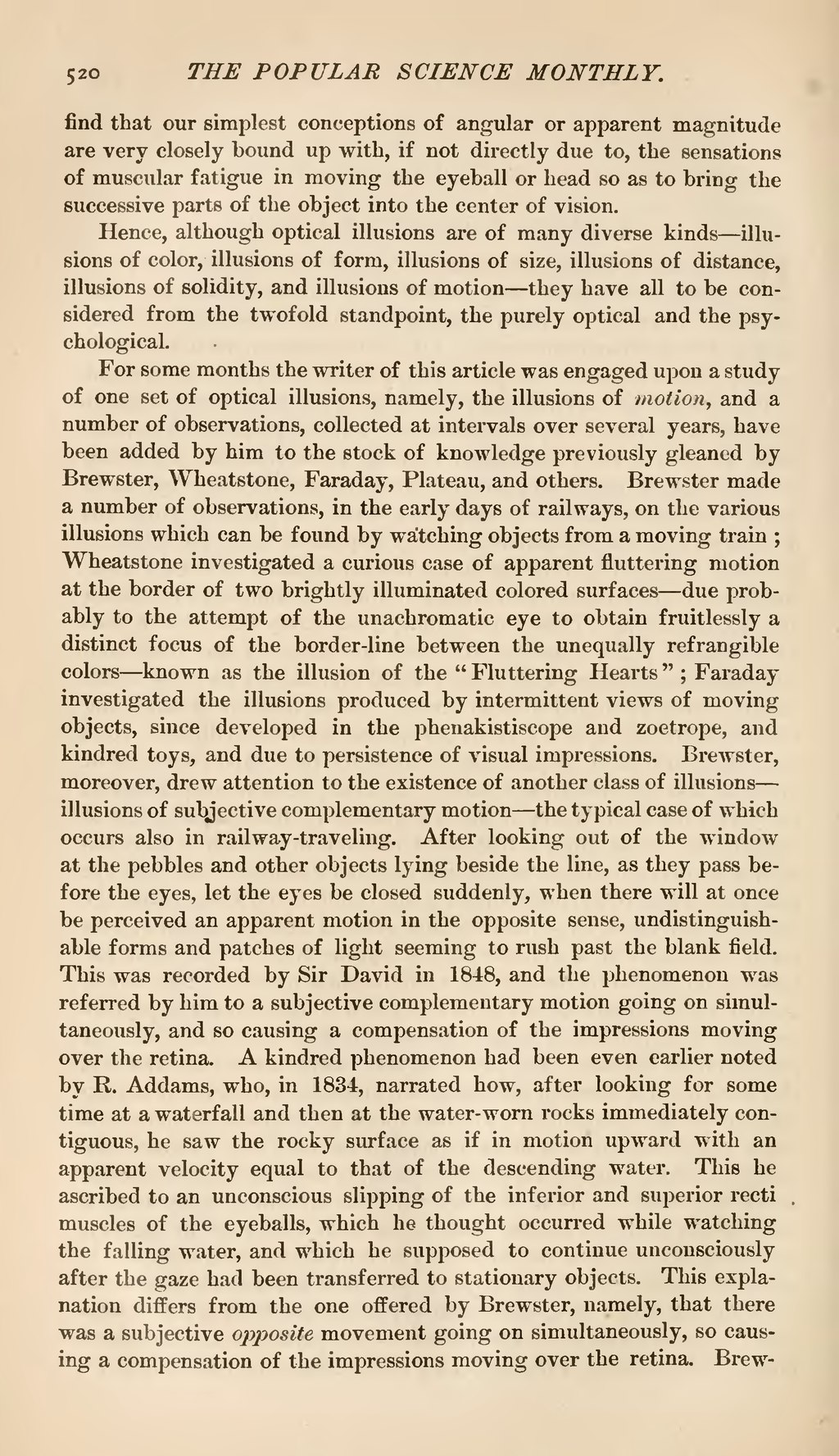find that our simplest conceptions of angular or apparent magnitude are very closely bound up with, if not directly due to, the sensations of muscular fatigue in moving the eyeball or head so as to bring the successive parts of the object into the center of vision.
Hence, although optical illusions are of many diverse kinds—illusions of color, illusions of form, illusions of size, illusions of distance, illusions of solidity, and illusions of motion—they have all to be considered from the twofold standpoint, the purely optical and the psychological.
For some months the writer of this article was engaged upon a study of one set of optical illusions, namely, the illusions of motion, and a number of observations, collected at intervals over several years, have been added by him to the stock of knowledge previously gleaned by Brewster, Wheatstone, Faraday, Plateau, and others. Brewster made a number of observations, in the early days of railways, on the various illusions which can be found by watching objects from a moving train; Wheatstone investigated a curious case of apparent fluttering motion at the border of two brightly illuminated colored surfaces—due probably to the attempt of the unachromatic eye to obtain fruitlessly a distinct focus of the border-line between the unequally refrangible colors—known as the illusion of the "Fluttering Hearts"; Faraday investigated the illusions produced by intermittent views of moving objects, since developed in the phenakistiscope and zoetrope, and kindred toys, and due to persistence of visual impressions. Brewster, moreover, drew attention to the existence of another class of illusions—illusions of subjective complementary—motion the typical case of which occurs also in railway-traveling. After looking out of the window at the pebbles and other objects lying beside the line, as they pass before the eyes, let the eyes be closed suddenly, when there will at once be perceived an apparent motion in the opposite sense, undistinguishable forms and patches of light seeming to rush past the blank field. This was recorded by Sir David in 1848, and the phenomenon was referred by him to a subjective complementary motion going on simultaneously, and so causing a compensation of the impressions moving over the retina. A kindred phenomenon had been even earlier noted by R. Addams, who, in 1834, narrated how, after looking for some time at a waterfall and then at the water-worn rocks immediately contiguous, he saw the rocky surface as if in motion upward with an apparent velocity equal to that of the descending water. This he ascribed to an unconscious slipping of the inferior and superior recti muscles of the eyeballs, which he thought occurred while watching the falling water, and which he supposed to continue unconsciously after the gaze had been transferred to stationary objects. This explanation differs from the one offered by Brewster, namely, that there was a subjective opposite movement going on simultaneously, so causing a compensation of the impressions moving over the retina. Brew-

